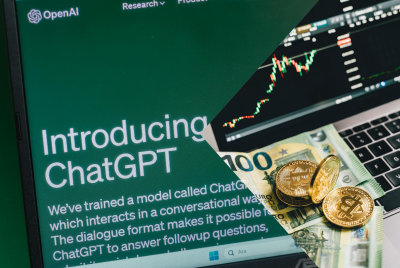ChatGPT Designs Tartan to Celebrate Birth of Artificial Intelligence
The virtual assistant, which can be used for just about everything, has received widespread attention for its remarkable speed and power.

ChatGPT was released to the public in November 2022, triggering the rapid development of artificial intelligence and advanced language models.
The virtual assistant, which can be used for just about everything, has received widespread attention for its remarkable speed and power.
Last month, the software was even used to produce a new Beatles song, which has since risen to Number 1 in the music charts.
The song, 'Now and Then', which harnessed AI to include the vocals of John Lennon and guitar by George Harrison, who died in 1980 and 2001 respectively, was released last Thursday.
However, ChatGPT also sparked serious concern over the direction AI is headed, causing hundreds of tech experts around the world to pen a letter expressing their fears over the "unregulated development" of the technology.
With this in mind, UK Prime Minister Rishi Sunak hosted the world's first 'AI Summit' in Bletchley Park, Buckinghamshire last month.
In the build-up to the conference, Sunak announced the establishment of a 'world first' UK AI safety institute.
The organisation will aim to "advance the world's knowledge of AI safety".
Marking a year since its initial release, ChatGPT has now designed a new Scottish tartan to honour the creation of AI.
Kiltmaker Steven Sim has used the AI tool to create the traditional item of clothing – and it's already been accepted onto the official Scottish Register.
The creation features prominent red, to represent the "passion that drives AI development, and gold for 'the brilliance and illumination AI brings to the world".
The design is inspired by the popular science fiction novel 'The Hitchhiker's Guide to the Galaxy'.
Sim, a former graphic designer, already has 50 patterns to his name, curated throughout a 12-year career.
He gave ChatGPT some basic guidance before it began designing – the kilt had to include between two and six colours relevant to AI and have a thread count between 130-180.
According to its notes of registration, the tartan was created "to celebrate the dawn of artificial intelligence" and honour one of the "founding fathers" of the field, computer scientist John McCarthy.
Its colours - navy blue, bright gold, two shades of grey, red and green – collectively represent "mankind's vast knowledge, enlightenment, impartiality, the journey of learning, creativity and innovation and the environmental impact of AI's evolution".
"The tartan is intended to capture the essence of AI development, and its impact on the world while also warning about its potential risks and unintended consequences," the description reads.
Sim asked the bot for a "detailed and vivid rationale" for the design that reflected the choices behind each colour.
The designer is not the only one recently who has taken inspiration from The Hitchhiker's Guide to the Galaxy to bring an idea to life.
X owner Elon Musk has just unveiled a new chatbot called Grok that has been modelled on the novel, one of the tech billionaire's favourites.
In honour of the book's humour, Grok is designed to answer questions "with a bit of wit and has a rebellious streak".
Aside from Musk's new chatbot, the past week has seen a flurry of developments in the AI world.
The tech billionaire declared human trials will begin for his "neurolink" brain chip, prompting thousands of people to volunteer.
AI startup company Humane announced the launch of an "AI pin" which marks the latest iteration of wearable tech.
And a study today revealed that ChatGPT is capable of responding to human emotions.
According to research conducted by a team of investigators from Microsoft, William & Mary and centres across Asia, ChatGPT's response quality drastically improved when the prompt comprised an emotional cue like "this plays a significant role in my career" or "this is very important to me".
© Copyright IBTimes 2025. All rights reserved.






















